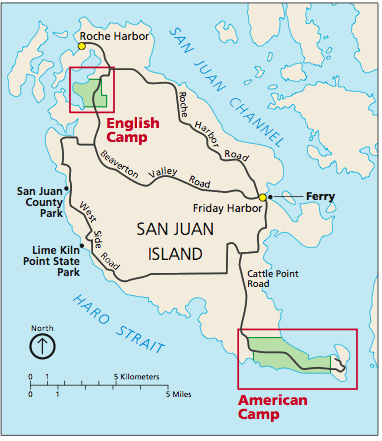The United Kingdom of Great Britain and Northern Ireland proudly flies the Union Flag, often called the Union Jack. It retains an official or semi-official designation throughout the Commonwealth Realm. Oddly, it also flies over a tiny corner of the United States with the explicit approval of the American government.
I’m not talking about Hawaii where the Union Flag has been “cantoned in the dexter chief angle next to the point of suspension” (fancy talk for “stuck in the upper corner next to the flagpole”). However, that’s still a good example.
I’m not considering embassies or consulates, either. And I’m not I referring to Union Flags flown outside of various self-styled “British Pubs” scattered throughout the United States. Those serve a thirsty expatriate community or as a cheap marketing ploy. Really, this is not a trick question. I’m referring to an honest-to-goodness genuine Union Flag flying over sovereign American territory controlled by an agency of the United States government.
It’s all due to the Pig War
This obscure Anglo-American disagreement had roots in a much greater dispute involving large swaths of western North America. I’ll briefly summarize the issues surrounding the Pig War. However, if you would like to know more you can always consult Wikipedia.
Britain and the United States resolved the preponderance of the western land issues peacefully in the Oregon Treaty of 1846. The parties designated the 49th parallel as their boundary from the Straight of Georgia all the way to the Rocky Mountains (this agreement also created the Point Roberts oddity).
They further agreed that all of Vancouver Island, located west of the Strait of Georgia, became British territory even though some of it fell south of the 49th parallel. That sounds amicable enough. It’s nice to see countries resolving their disputes diplomatically; a welcome change from the War of 1812 and that earlier revolution stuff.
Imprecise Treaty
The provisions accounting for the 49th parallel and Vancouver Island were clear. Unfortunately the dip in the border as it jogged south of the 49th parallel and around the southern end of Vancouver Island was not. So it became a point of serious contention. Here the treaty said the boundary should go:
…to the middle of the channel which separates the continent from Vancouver’s Island; and thence southerly through the middle of the said channel, and of Fuca’s straits to the Pacific Ocean.
Well, we’ve got a problem. This is what sits squarely in the middle of “said channel”:
![San Juan Islands Map. Pfly [CC BY-SA 3.0], via Wikimedia Commons](https://upload.wikimedia.org/wikipedia/commons/e/e1/San_Juan_Islands_map.png)
Note that there are two major channels, Haro Strait and Rosario Strait. Naturally British interests favored Rosario Strait while American interests favored Haro Strait. Both sides claimed San Juan Island and established settlements. Neither side recognizing the authority of the other and it was only a matter of time before interests clashed. The spark finally ignited in 1859. An American settler found a pig owned by the Hudson Bay Company trespassing on his property and promptly shot it.
Pressure Builds
The situation started spiraling out of control with tit-for-tat military reinforcements. Within two months nearly five hundred American troops with 14 cannons dug-in at San Juan Island. There they stared down three British warships manned by two thousand sailors and 70 mounted guns.
Cooler heads prevailed once the crises rose to higher levels of government. The absurdity of armed conflict over a pig reached people with the ability and authority to diffuse the situation. Both nations agreed to a joint military occupation of San Juan Island until final resolution.

British Royal Marines arrived under terms of the agreement and established a garrison known as English Camp. They shared San Juan Island with their American counterparts on the opposite end of the island. The arrangement lasted more than a decade until an international arbitration commission ruled in favor of the Americans. The Royal Marines decamped peaceably in 1872.
But what about the flag?
The Union Flag Rising at English Camp
This United States National Park Service preserves this tradition at its San Juan Island National Historical Park. The park exists into two distinct parts, American Camp and English Camp. The Union Flag, fittingly enough and as seen in the video above, flies over English Camp. Supposedly it is the only place in a U.S. national park where this occurs although I’ve not been able to corroborate that independently. The flag and the flagpole were both provided by the British government as a sign of friendship.
The park will will be celebrating the sesquicentennial (150th anniversary) of the Pig War this year, on July 25-26, 2009. Pack your bags!

Leave a Reply